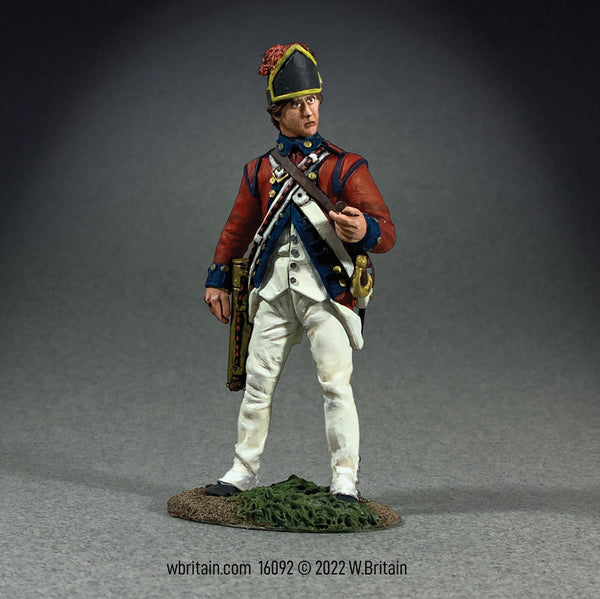- Continue Shopping
- Your Cart is Empty
16105 American Militiaman, 1775-81
$ 48.00
From the beginning of European colonization of North America, communities along the Atlantic seaboard required able-bodied males to participate in the defense of their towns and colonies. These militia units served as the backbone of protection from Native American tribes on the frontier and foreign foes like the French. Most militias would muster and train in town and county centers at least two times a year. As tensions grew between the colonies and Great Britain, some companies met more often establishing a more professional level of training. Militias were the main colonial military organization for defense, but they were only part-time and when rebellion became war, many men became full time soldiers in state or Continental Line regiments. Based on the Soldier Study by Don Troiani American Militiaman 1775-81
Related Items
16092 Art of War: Fifer, 2nd Continental Artillery
$ 48.00
Art of War: Fifer, 2nd Continental ArtilleryIn the 18th century, military field music acted as a melodic communication system that ordered the soldiers’ day and sent vital communications through the...
16106 American Militiaman, 1775-83 Troiani Art of War
$ 48.00
The performance of the colonial militia stunned the military professionals of Great Britain in the early days of the American Revolution. These civilians-turned-soldiers, often had some previous service experience in...
16107 - Art of War: Major John Buttrick, Massachusetts Minuteman, 1775
$ 48.00
Art of War: Major John Buttrick, Massachusetts Minuteman, 1775 - Art of Don Troiani John Buttrick was in command of a company of minutemen, 19 April 1775. From his position...
16108 - Art of War: Black Militiaman of the Spartanburg, S.C. Militia
$ 48.00
Black Militiaman of the Spartanburg, S.C. Militia Spartanburg County, South Carolina bears a proud Revolutionary War heritage. The county has more Revolutionary War engagement sites than practically any other locale in...














